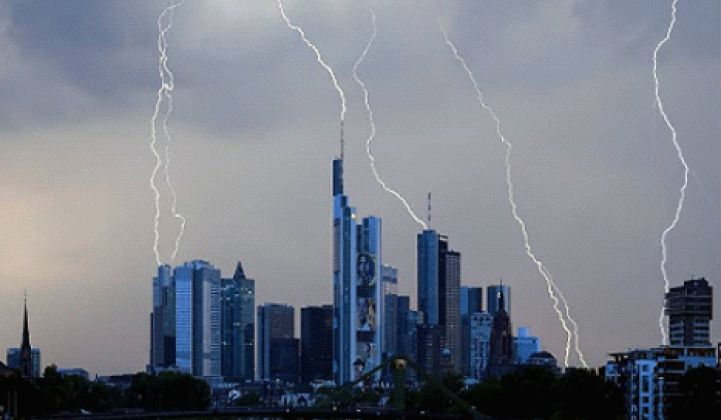Siemens has bought SureGrid, a building management firm from Texas, the latest in a string of acquisitions in efficiency and automation.
The deal highlights two major trends in green. First, building efficiency, particularly commercial building efficiency, has emerged as one of the strongest growth markets. Many of the startups have developed software and services that ride on top of the traditional building management systems from Siemens, Johnson Controls, Honeywell, and Echelon and effectively eke out additional gains by raising or lowering air conditioner/heater settings to better match weather patterns, demand response signals and/or power pricing. Some systems also control lighting.
Cisco, Honeywell, EnerNoc, and Serious Materials have all made acquisitions in the market over the last two years and in the case of EnerNoc and Honeywell, more than once. A week ago today, Serious told us they acquired Valence Energy to get into management.
The second trend, of course, is the creeping conglomeritis of smart grid and green technology in general. Many green products require large amounts of capital, worldwide sales teams, and veritable armies of sales/service/support employees. Startups have the ideas; conglomerates have the footprint. It's a perfect May-September romance. As a result, some of the newest powers in green technology can trace their roots back to the 19th century. Siemens has been particularly active. It bought Solel, the solar thermal vendor, and has said it will buy its way into a top-three spot in wind.
The convergence of these two trends likely means further acquisitions in the future. Some possible candidates: Adura Technologies, Lumenergi, Redwood Systems (lighting and building controls), Optimum Energy (HVAC software; Adobe is a customer), Hara (resource tracking), BuildingIQ (building management with demand response capabilities.) We picked SureGrid as a prime acquisition target two weeks ago.
We profiled SureGrid in May after I ran into company president Mike Frost in the lunch buffet line at Greentech Media's The Networked Grid conference. The company has created a cloud-computing-based building management system that attempts to curb energy by fine-tuning the HVAC system. The system examines weather data, room occupancy, traffic, ambient carbon dioxide and use patterns and turns the chillers up or down accordingly. It can also be hooked into demand response systems.
What's the carbon dioxide/exercise angle? "CO2 is the best occupancy sensor there is" because it dissipates quickly, Frost told me then. As a result, changes in CO2 levels can serve as a proxy to determine how many people are in a room.
"It is better than a motion sensor," he added.
The company discovered this through management systems in health clubs, particularly rooms with spin biking classes. Spin rooms are generally kept at 70 or 72 degrees. But when classes begin, the heat rises and the air conditioner needs to kick into a higher gear. People also breathe more heavily, which also highlighted the CO2 connection.
"Health clubs have saved a lot of money" by kicking the AC back down once the CO2 levels drop, he said.
The company also counts Michael's, the chain of craft stores, as a client. While current customers use the system to adjust the HVAC to balance comfort with energy efficiency, Frost indicated in May that they remain a bit nervous about demand response. Assume it's a hot weekend day in a resort town, Frost posits. A utility wants to declare a demand response event and curb AC units. But if a wedding reception is underway, the hotel won't want to cooperate.



